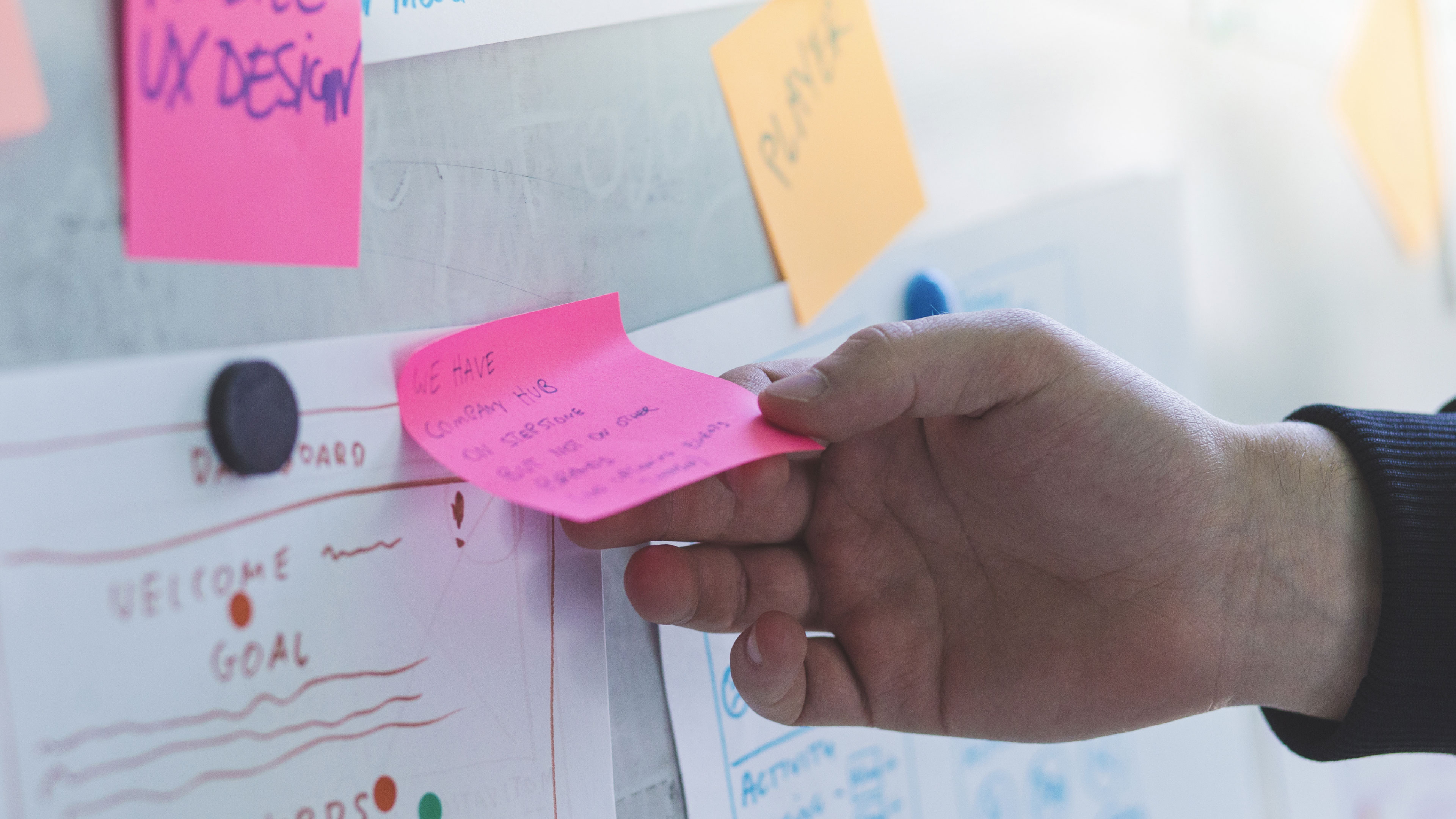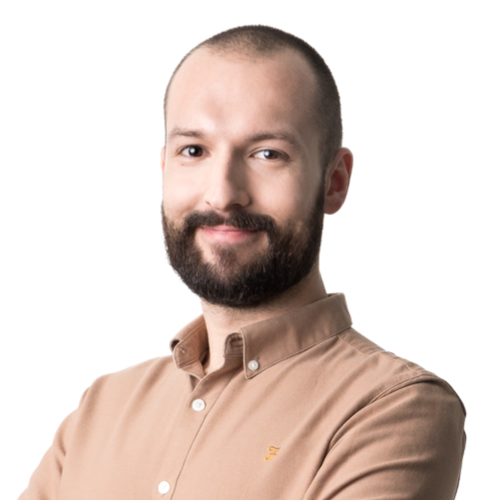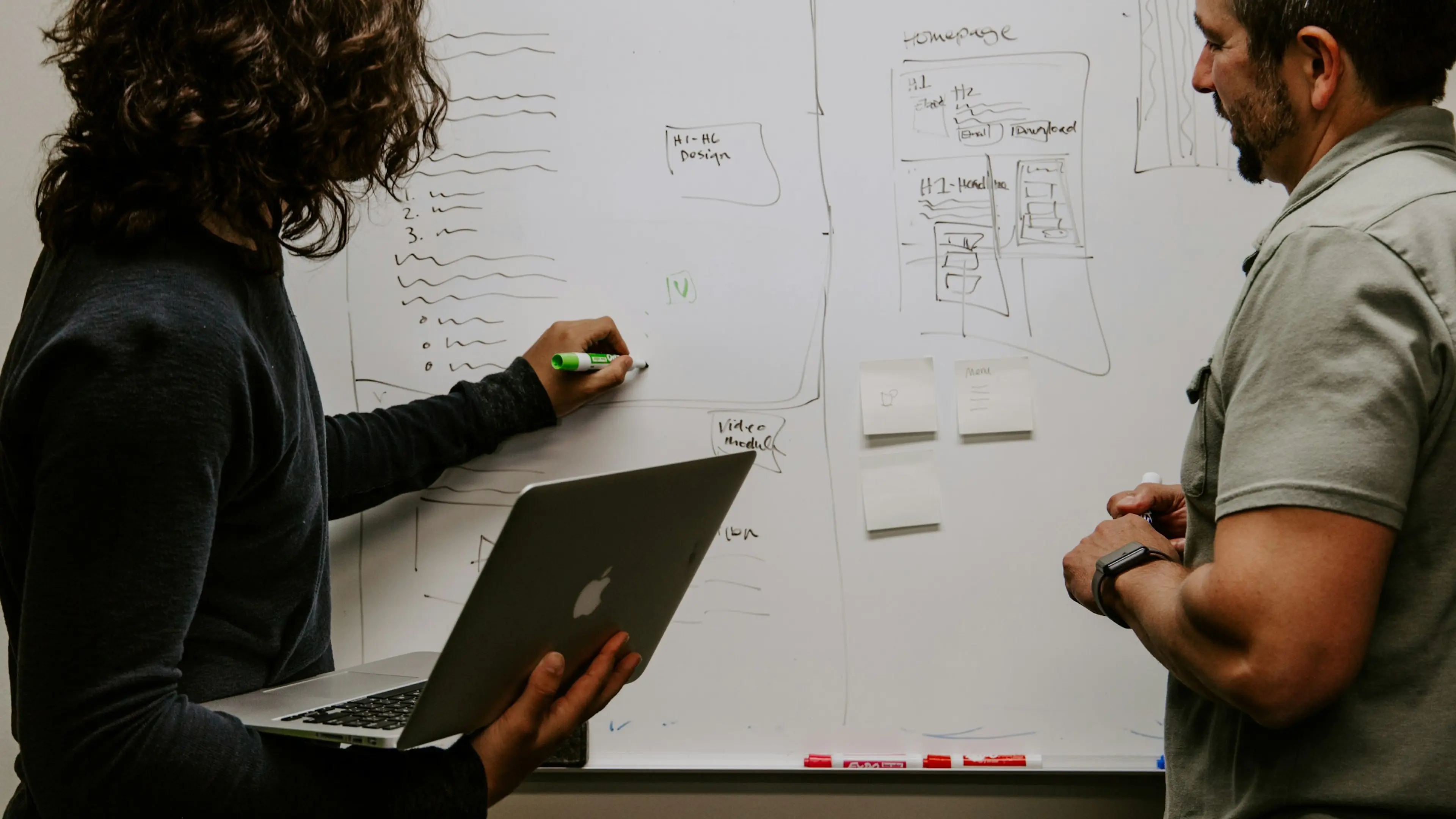10 June 2021 (updated: 25 October 2022)
How to Run an Effective Product Design Workshop? Tips from a Senior UX Designer
Chapters

Your Product Design Workshop's effectiveness very much depends on the time and the methods used in the process. See how to use them both to your advantage.
What is (and what isn’t) a Product Design Workshop
If I were to describe a Product Design Workshop in one sentence, I would say it is capable of adding just a bit of the magic dust to your process. Let’s make one thing clear from the start: not every meeting is a workshop. There are three basic elements that distinguish your regular meeting from a Workshop.
- Inputs (information that the team brings to the session),
- A facilitator to conduct the session,
- Outputs (deliverables) that fuel the next steps in the process.
 What does Product Design Workshop looks like?
What does Product Design Workshop looks like?
A Workshop is a specific kind of a meeting and as such it has a mini structure of its own:
- An opening, with a goal to find the common ground & knowledge for all participants,
- Exploring phase, where all participants elicit their ideas,
- Closing: where you decide on the workshop’s outcome and output you were able to establish.
A workshop always ends with one or several tangible outcomes.
Product Design Workshop vs Product Design Process
Some people may be referring to Design Sprints or Workshops as a replacement for a full collaborative process, and yet again, that is not the case. A Workshop may happen at any stage of your Product Design or Product Development process, and serve a different purpose. Comparing a Design Sprint outcomes to a full Product development process outcomes is the same as comparing 3 min ABS to a full fitness routine. They are both useful, but never a replacement for one another.
 Every time someone suggests a Workshop is pretty much the same as Product Design Process, think of this quote.
Every time someone suggests a Workshop is pretty much the same as Product Design Process, think of this quote.
So, why organize a Product Design Workshop?
A Product Design Workshop allows you and your team to see the same problem from various perspectives. At larger organizations, it’s not uncommon for people not to have direct contact with one another; sometimes a designer may not have direct access to the company’s C-level, the marketing department may not have direct contact (or enough of it) with the Customer Support department, and so on.
A workshop provides necessary space where your team gets to look at the big picture of your organization or the product, and take into account all of their perspectives.
The fundamental role of the facilitator
Every workshop needs a facilitator. In theory, a facilitator should only be guiding and navigating the session, and is not responsible for providing the input into the conversation.
In practice, the facilitator sometimes suggests points or a whole discussion, so the team moves towards a shared direction.
The facilitator is also responsible for keeping the session & workshop activities in time; ensures the team does not lose too much time on digressions, and schedules breaks when necessary.
3 elements of an effective Product Design Workshop
1. Find the common ground
Often the workshop’s participants come from different domains, departments, and fields. This is actually very beneficial for the workshop’s outcomes, but it requires preparation activities to ensure that the participants share the same knowledge to carry the discussion on the same level. Example: If I don't know a thing about the company’s customer support and the customer support doesn’t know anything about user experience, we can’t rush into decisions that influence these departments with the same level of knowledge.
By using grounding activities and design methods, we provide a stable foundation for whatever comes next.
Examples of grounding methods:
- Business Model Canvas / Lean Canvas
- SWOT Analysis
- Business Goals and constraints
- Proto-personas
- Empathy maps
A tip: Grounding methods deliverables should be noted down and remembered throughout the whole Workshop. Sometimes, Workshops last longer than just one day, and it’s hard to have everything in the back of your head at all times.
When you write your conclusions down, even better, if they take up physical space during the workshop, it is easier to refer to them later, and not get lost.
Whatever discussion you’re having, whatever decision you’re about to make: you can easily base it on the common ground you have established at the beginning.
 Putting your ideas on a board for everyone to see and come back to them is a good idea.
Putting your ideas on a board for everyone to see and come back to them is a good idea.
In a remote setting, you can use tools like Miro or Mural. It’s a good way to make sure people stay in touch with the common ground and data you set, and base all of your assumptions on in case a heated debate should arise.
2. Keep the session's flow
Workshops are much longer than regular 1-hour meetings, and it may be a bit difficult to maintain the same flow throughout the whole of it. This is why the key to the workshop’s tangible outcome lies in the hands of the facilitator.
Based on my calculations (*that are completely made up and based solely on my experience, but in my defense, I facilitated quite a handful of them, and produced courses on effective workshopping), solid facilitation is 70% of the worksop’s success.

Without proper and mindful facilitation, the meeting can go south in a matter of minutes (and I’m sure you’ve seen it many times before), and what’s worse it can end without any tangible output whatsoever. We’ve been there. And we don’t want that.
To help you maintain the Workshop’s flow, there are a couple of methods and activities.
- User (or Customer) journey maps: to touch upon all the key points of the user and customer journey, and leave nothing behind.
- Ecosystem map: with ecosystem mapping you can understand your product’s current state, all interactions & influence it has on the user, on the organization, and on the environment it exists in.
- How might we?: a very useful method for discussing directions for specific solutions, but not solutions themselves; a handy tool when you might not feel comfortable enough to commit to a decision, but you want to set a clear direction.
The flow activities deliverables should also end up written down for everyone to see, to give the participants some way to refer back to it. A hidden benefit is the internal satisfaction: the more you see what is done on the wall, the more satisfied with the meeting you are.
3. Maintain the session's energy
Again, workshops are much longer than regular meetings, and it is only right to anticipate that people will get tired; this part is equal for the regular participants and for the facilitator. There will be certain points, where you will need to take a break. But there are also ways to maintain or even up the energy for participants. So, if you’re seeing that your people are getting tired you might use one of the incendiary methods to shake things up a bit. This is where we tend to disagree: e.g. in prioritization.
Some of the incendiary methods include:
- Design Studio: participants try to come up with solutions to the problem on their own, and then, everyone votes on the best and most innovative approaches we might actually use; the power of Design Studio is that it is quick, allows creativity, and relies on feedback. (You can learn more using Design Studio Method in my course on Skillshare.)
- MoSCoW Prioritization: an incredibly useful method to get every participant on the same page with features prioritization of your product. There are four columns (Must have/Should have/Could Have/Won’t have) and everyone decides which features are indispensable for the product’s launch. Those which are less valuable for the end-user, and might be omitted at the time. A very good tip is to never leave the last column (“Won’t have”) empty, to give the indication that a feature is not considered for this very moment. But at the same time, this sprint's won't-have could be the next sprint's must-have.
Do you need a Product Design Workshop?
Workshopping is a great tool for teams to get on the same page, understand everyone’s motives, priorities and decide on a shared vision on what to do next, and how to do it.
Even though it is a good practice to begin your product development with a workshop, it can just as well be a valuable input for you at any stage of design & development, whenever you stumble upon an issue that needs to be solved and involves many parties’ interests.
At EL Passion we treat workshopping really seriously and we pride ourselves on our methods and expertise. Check out our Product Design Workshop services.
See other reads on Product Design Workshop service
- Your Digital Product Needs a Product Design Workshop to Scale: check out the goals and benefits of the Product Design Workshop for your app, no matter the stage of your product development.
- Case Study: Unlocking The Power of a Remote UX Workshop: see how we helped our client to create a viable product development roadmap, all in virtual collaboration.
You may also like

Native vs Cross-Platform App Development: Which is Right for Your Business
3 September 2024 • Maria Pradiuszyk




